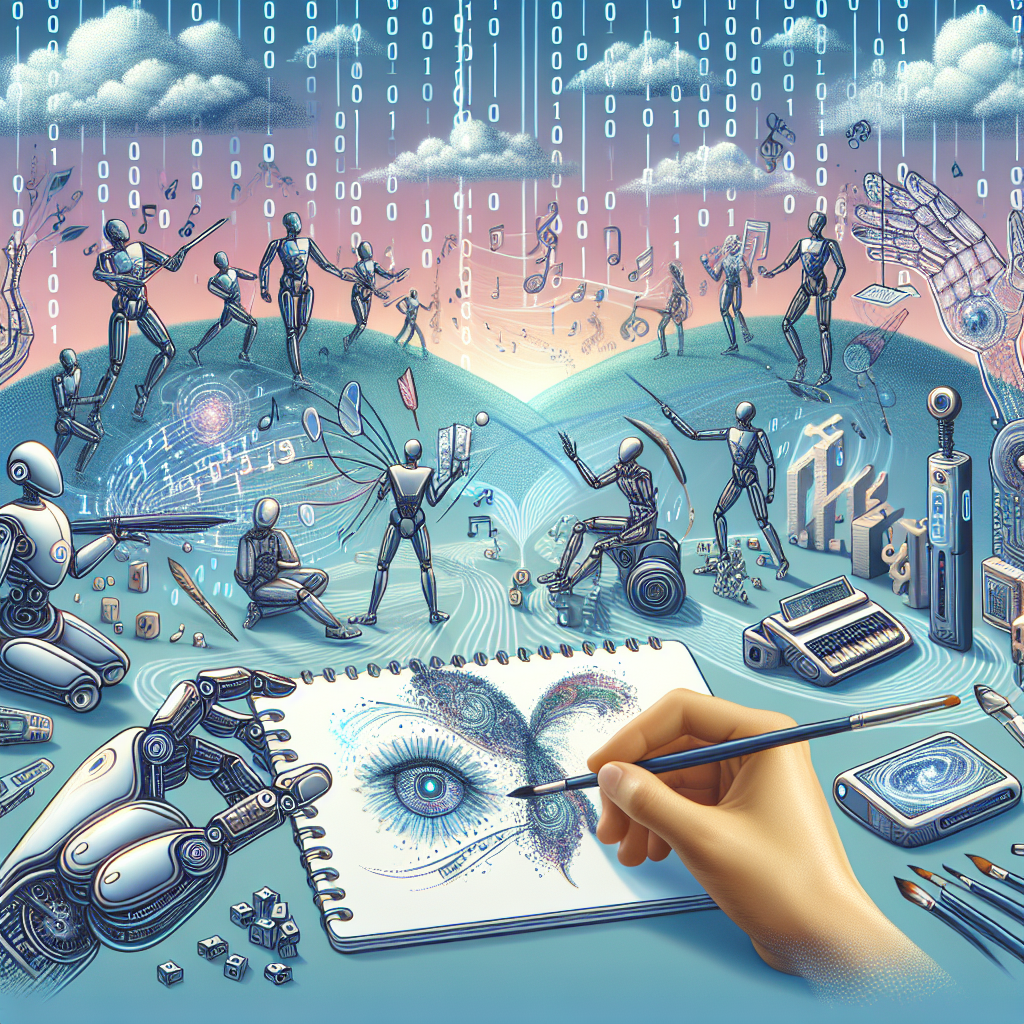The Future of AI-Driven Creativity
Artificial intelligence (AI) has been making significant advancements in recent years, and its impact on creativity is becoming more and more apparent. From generating music and art to helping writers come up with new ideas, AI is changing the way we think about creativity. But what does the future hold for AI-driven creativity? Will AI eventually replace human artists and writers, or will it simply augment their abilities? In this article, we will explore the possibilities and challenges of AI-driven creativity and what it means for the future of art and innovation.
AI in the Creative Process
AI has already begun to play a significant role in the creative process across various industries. For example, AI algorithms can generate music based on existing compositions, create art, and even write stories or poems. These AI-generated works can sometimes be indistinguishable from those created by human artists, leading to questions about the role of AI in the creative process.
One of the key benefits of using AI in creativity is its ability to process and analyze vast amounts of data quickly and efficiently. This can help artists and writers come up with new ideas, explore different styles, and experiment with new techniques. AI can also help streamline the creative process by automating certain tasks, such as generating drafts or editing images.
However, there are also concerns about the impact of AI on creativity. Some worry that AI-generated works lack the emotional depth and originality of human-created art. Others fear that AI could eventually replace human artists and writers, leading to a homogenization of creative output.
The Future of AI-Driven Creativity
Despite these concerns, the future of AI-driven creativity is likely to be a mix of collaboration and augmentation. AI tools will continue to play a significant role in the creative process, helping artists and writers expand their creative horizons and experiment with new ideas. AI can also help democratize the creative process by making it more accessible to a wider range of people.
In the future, we may see AI-powered tools that can assist artists in real-time, providing suggestions and feedback as they work. For example, AI could analyze a painter’s brushstrokes and color choices and offer suggestions for improving the composition. Writers could use AI to generate plot ideas, develop characters, and even help with editing and proofreading.
AI could also help bridge the gap between different creative disciplines, enabling artists and writers to collaborate more easily and share ideas across mediums. For example, a musician could use AI to create a soundtrack for a film, or a writer could collaborate with an AI-generated character in a story.
Challenges and Ethical Considerations
Despite the potential benefits of AI-driven creativity, there are also significant challenges and ethical considerations to consider. For example, there are concerns about the ownership and copyright of AI-generated works. Who owns the rights to a piece of music or art created by an AI algorithm? How do we ensure that artists and writers are properly credited and compensated for their work?
There are also concerns about the impact of AI on the creative economy. Will AI eventually replace human artists and writers, leading to job losses and a decline in creative diversity? How do we ensure that AI-driven creativity is used responsibly and ethically?
Another challenge is the potential for bias in AI algorithms. AI systems are only as good as the data they are trained on, and there is a risk that biased or incomplete data could lead to biased or flawed creative output. This could have serious implications for issues such as representation and diversity in art and literature.
FAQs
Q: Will AI eventually replace human artists and writers?
A: While AI is likely to play an increasingly significant role in the creative process, it is unlikely to replace human artists and writers entirely. Instead, AI is more likely to augment their abilities and help them explore new ideas and techniques.
Q: How can AI help artists and writers in the creative process?
A: AI can help artists and writers in a variety of ways, such as generating new ideas, providing feedback and suggestions, and automating certain tasks. AI can also help streamline the creative process and make it more accessible to a wider range of people.
Q: What are some of the ethical considerations of AI-driven creativity?
A: Some of the ethical considerations of AI-driven creativity include issues of ownership and copyright, the impact on the creative economy, and the potential for bias in AI algorithms. It is important to ensure that AI-driven creativity is used responsibly and ethically.
In conclusion, the future of AI-driven creativity is likely to be a mix of collaboration and augmentation. AI tools will continue to play a significant role in the creative process, helping artists and writers expand their creative horizons and experiment with new ideas. However, there are also significant challenges and ethical considerations to consider, such as issues of ownership and copyright, the impact on the creative economy, and the potential for bias in AI algorithms. It is important to approach AI-driven creativity with caution and consideration, ensuring that it is used responsibly and ethically.

